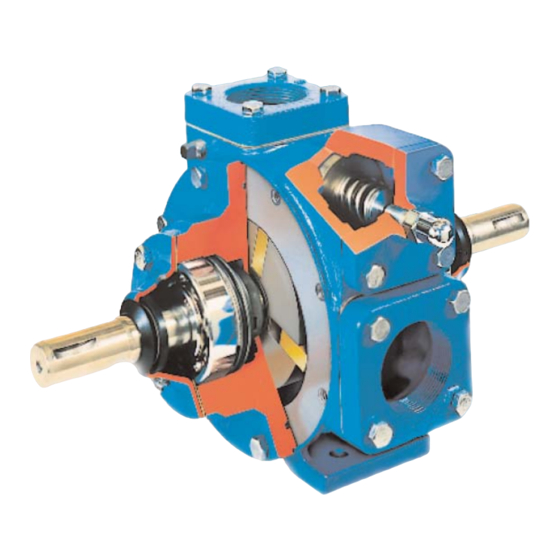Dover PSG Blackmer TXD1225A Інструкції з монтажу, експлуатації та технічного обслуговування - Сторінка 5
Переглянути онлайн або завантажити pdf Інструкції з монтажу, експлуатації та технічного обслуговування для Водяний насос Dover PSG Blackmer TXD1225A. Dover PSG Blackmer TXD1225A 12 сторінок.

Pumps operating against a closed
valve can cause system failure,
personal injury and property damage
Hazardous pressure
can cause personal
injury or property
damage
Disconnecting fluid or pressure
containment components during pump
operation can cause serious personal
injury, death or major property damage
Hazardous pressure
can cause personal
injury or property
damage
If pumping hazardous or toxic fluids,
system must be flushed prior to
performing service
Hazardous or toxic
fluids can cause
serious injury.
Failure to relieve system pressure prior
to performing pump service or
maintenance can cause personal injury
or property damage.
Hazardous pressure
can cause personal
injury or property
damage
PRE-START UP CHECK LIST
1. Check the alignment of the pipes to the pump. Pipes must
be supported so that they do not spring away or drop
down when the pump flanges or union joints are
disconnected.
2. Install vacuum and pressure gauges in the ¼" NPT ports
located on the pump cylinder near the intake and
discharge flanges. These can be used to check the actual
suction and discharge conditions after pump start-up.
3. Inspect complete piping system to ensure that no piping
loads are being placed on the pump.
4. Secure appropriate hose connections.
OPERATION
START UP PROCEDURES
Consult the "General Pump Troubleshooting" section of
this manual if difficulties during start up are experienced.
1. Ensure that appropriate valves are open in the inlet and
discharge lines.
2. Start the pump. Priming should occur within one minute.
3. Check the vacuum and pressure gauges to ensure the
system is operating within expected parameters. Record
the gauge readings in the "Initial Start Up Information"
section of this manual for future reference.
4. Inspect piping, fittings, and associated system equipment
for leaks, noise, vibration and overheating.
5. Check the flow rate to ensure the pump is operating within
the expected parameters.
6. Check the pressure setting of the relief valve by
momentarily closing a valve in the discharge line and
reading the pressure gauge. This pressure needs to be 15
-20 psi (1.0 - 1.4 Bar) higher than the maximum system
operating pressure or the external bypass valve setting (if
equipped). DO NOT operate the pump against a closed
discharge valve for more than 15 seconds. If
adjustments need to be made, refer to the "Relief Valve
Setting and Adjustment" section of this manual.
PUMP SPEED
PTO and hydraulically driven units MUST contain speed
control devices to prevent pump speeds above the maximum
RPM specifications, regardless of the truck engine unloading
speeds. If fluid delivery is less than expected, see the
"General Pump Troubleshooting" section
REVERSE ROTATION
When pumps are operated in reverse a separate pressure
relief valve must be installed to protect the pump from
excessive pressure.
It may be desirable to run the pump in reverse rotation for
system maintenance. The pump will operate satisfactorily in
reverse rotation for a LIMITED time, at a reduced
performance level. When operating the pump in reverse, a
separate bypass valve MUST be installed to protect the pump
from excessive pressure.
201-D00
page 5/12
NOTICE:
NOTICE:
